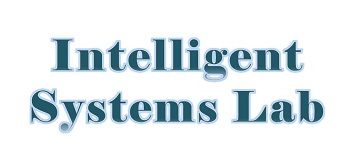ECSE 6610
Pattern Recognition
3 credits
Spring 2011
12:30-1:50 pm
Tues and Fridays
JEC 4107
Qiang Ji
JEC 7004
518-276-6400
qji@ecse.rpi.edu
Tues and Fridays 2-3pm
or by Appointment
Li Jia
jial@rpi.edu
4-5pm, Mondays
ECSE Lounge
Click here to get notes
A good background in linear algebra, probabilities, statistics, optimization, and good programming skills in MATLAB, and/or C++
This course introduces fundamental concepts, theories, and algorithms for pattern recognition and machine learning. Topics to be covered include linear regression, linear classification, support vector machines, dimensionality reduction, clustering, boosting, and probabilistic graphical models.
1) Student understands the fundamental pattern recognition and machine learning theories; 2) Student has the ability to design and implement certain important pattern recognition techniques; 3) Student has the capability of applying the pattern recognition theories to applications of interest.
C.M. Bishop, "Pattern Recognition and Machine Learning, Springer, 2006.
Pattern Classification (2nd Edition), Richard Duda, Peter Hart, and David Stork, John Wiley and Sons, 2000.
The course assessments include homework assignments, one middle term exam, class projects, and one final project. The homework will be done individually by each student. Class projects can be done individually or collaboratively in a team. The midterm exam will be open book and it will cover the materials up to the point of the exam. The final project requires a proposal, a final project report, and a presentation.
Grading will be based on homework assignments, projects, the middle-term exam, and the final project. There will be 4-5 projects, several assignments, and a final project. The grade distribution is as follows: Assignments: 15%, Projects: 50%, Midterm Exam: 20%, Final Project: 15%. Note late homework/project or missed exams will not be accepted without prior approval from the instructor.
Student-teacher relationships are built on trust. For example, students must trust that teachers have made appropriate decisions about the structure and content of the courses they teach, and teachers must trust that the assignments that students turn in are their own. Acts, which violate this trust, undermine the educational process. The Rensselaer Handbook of Student Rights and Responsibilities define various forms of Academic Dishonesty and you should make yourself familiar with these. In this class, all assignments that are turned in for a grade must represent the students own work. In cases where help was received, or teamwork was allowed, a notation on the assignment should indicate your collaboration. Submission of any assignment that is in violation of this policy will result in a penalty of receiving no credits for the assignment, project, or exam concerned. If you have any questions, please contact the instructor.
© Copyright 2012. All rights reserved
